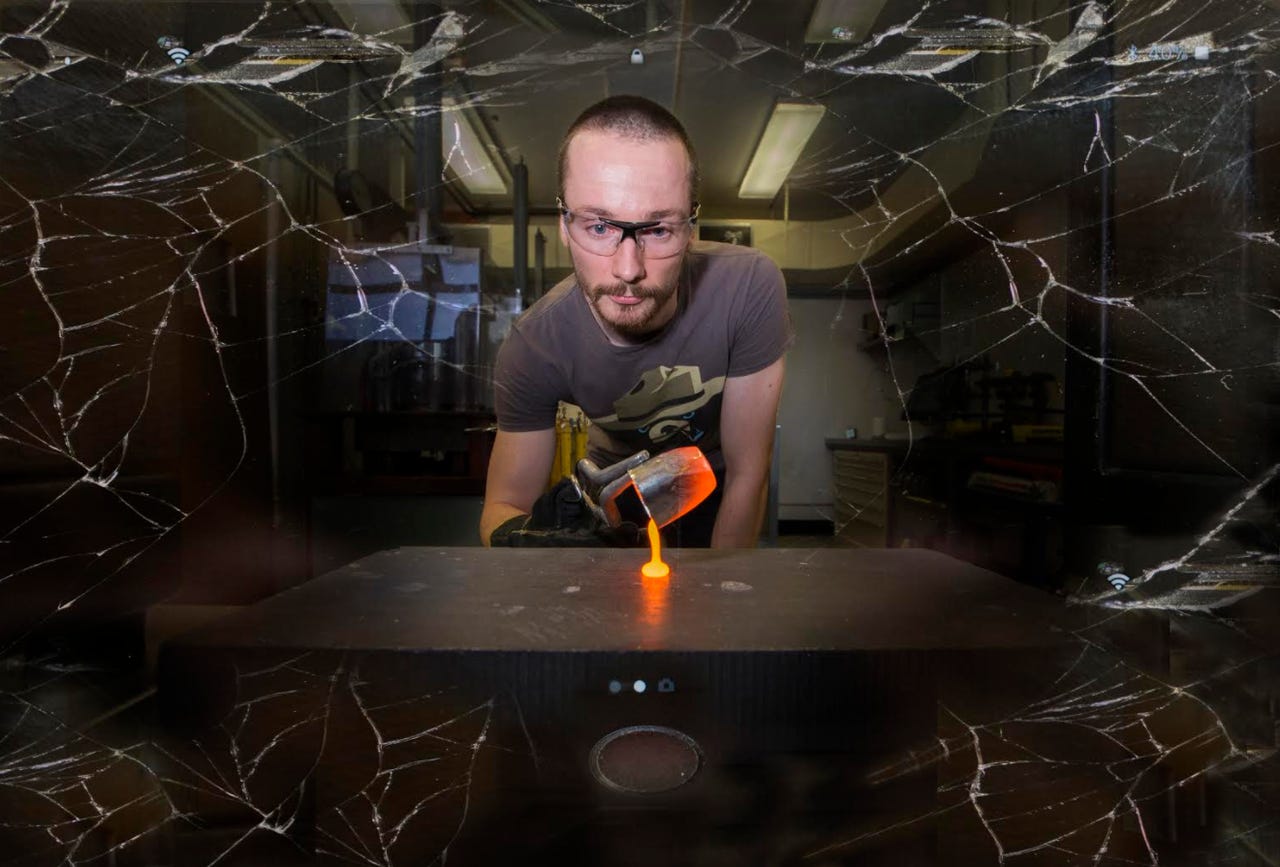ANU moves closer to fracture-proof phone screens


Dr Charles Le Losq at the Australian National University.
The Australian National University (ANU) and the Institut de Physique du Globe de Paris have completed a study on glass that could be crucial in the development of shatter-proof phone screens.
New knowledge garnered from the study, based on experiments and computer modelling, could be put to use by phone manufacturers to improve the resistance of glass to fracturing, ANU has said.
Dr Charles Le Losq from ANU told ZDNet that researchers worked on a type of glass called alumino-silicate, a mixture of aluminium and silicon oxide. Alumino-silicate is commonly used in the screens of mobile devices, including the Gorilla Glass used in Samsung's Galaxy S8.
"Glass is an everyday material that is all around us, but we actually don't really know a lot about it," he told ZDNet. "Particularly the common thinking is that the glass structure is quite random, atoms are randomly organised in it. Actually, at a very small scale, a nanometre scale, it's not that random and we have some organisation in the glass.
"We've seen that if you add some sodium or potassium, those atoms, contrary to what was the belief, do not tend to randomly distribute in the glass structure, but they form more clusters, or even what we call percolation channels of sodium and potassium atoms in the glass."
Le Losq said that these other elements, as well as calcium and magnesium, all influenced the flexibility and resistance of the glass, and that microscopic arrangements could affect the way a fracture started or even stopped in glass. The result of this is a more fracture-proof glass that could possibly be used by phone manufacturers in the future.
Le Losq added that the ANU will look to work with partners in the manufacturing industry for them to ultimately supply better phones for consumers.
Despite smartphones' ongoing technological advances, the basics such as durability continue to be compromised. Apple's recently released iPhone X and iPhone 8 have front and back glass panels for the first time in an iPhone, making it more difficult and more expensive to repair than previous generations.
Drop testing by SquareTrade found Samsung's Note 8 to be non-functional after a face-first drop test from 6 feet, while the iPhone 8 and iPhone 8 Plus fared slightly better. Side-on drops also left the Note 8 susceptible to significant damage due to its edge-to-edge screen.
Research into more durable, bendable screens has been ongoing at Samsung for several years. Samsung is targeting a foldable Note device for next year, according to the company's mobile boss DJ Koh, who also stressed that the phone will only launch when ready.
Previous reports suggested Samsung would launch two bendable phones: One that can be folded in half and another that has the ability to be furled to become a handset or tablet.
Both Samsung and LG have shown prototypes of foldable displays in tradeshows, but the tech has never been applied to a commercial product.
PREVIOUS AND RELATED COVERAGE
<="" p="" rel="follow">
- <="" p="" rel="follow"> <="" p="" rel="follow">
<="" p="" rel="follow"><="" p="" rel="follow"> <="" p="" rel="follow">As expected, the iPhone 8 breaks if you drop it (but it's better than the Samsung Note 8)
As you'd expect from what is essentially two sheets of glass sandwiched together, there's a high probability that the iPhone 8 will break if you drop it.
The iPhone 8 will have twice as much glass for you to break
The next iPhone will have twice as much glass for you to worry about.
To fold or not to fold: Will Samsung really launch a bendable phone?
Samsung remains highly interested in the concept of foldable, or bendable, phones, says its mobile boss. But a bendable smartphone will be difficult to produce, design, and launch, as is the question of how it will win developers.
Samsung Galaxy S8 falls short in durability, glass cracks easily in drop test(TechRepublic)
A recent breakability test from SquareTrade found that the Galaxy S8 and S8+ performed significantly worse the S7 and S7 Edge. However, that likely won't keep consumers from buying it.
Samsung's massive new display is everything tech pros need(TechRepublic)
The CGH90 allows business users to answer emails faster and view spreadsheets quicker with its curved, wide monitor.